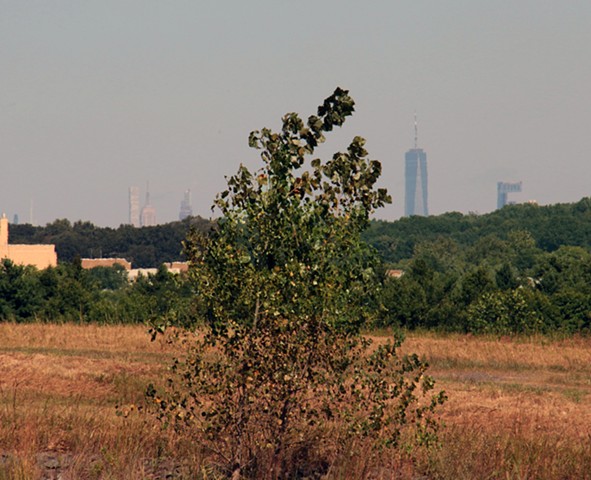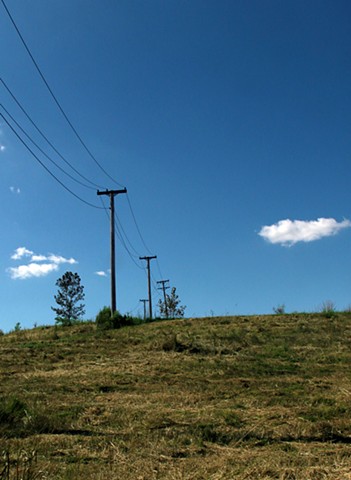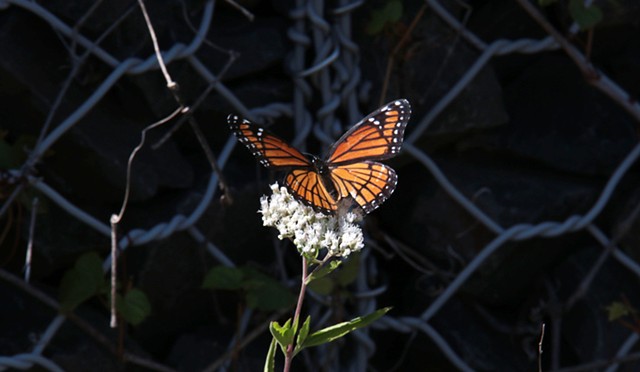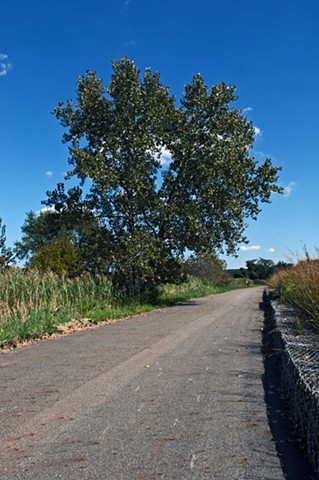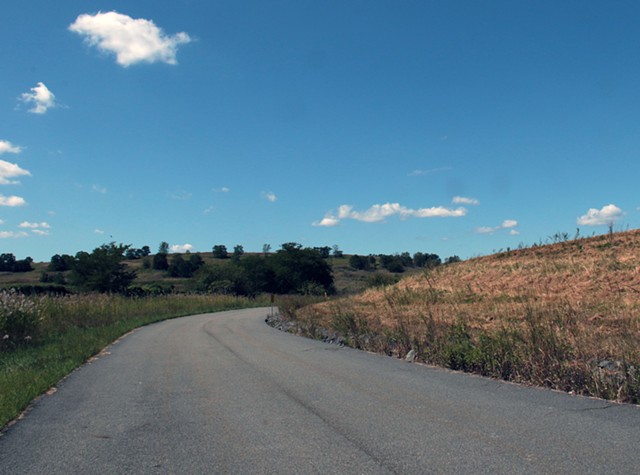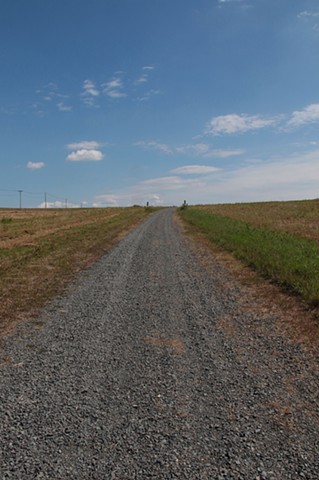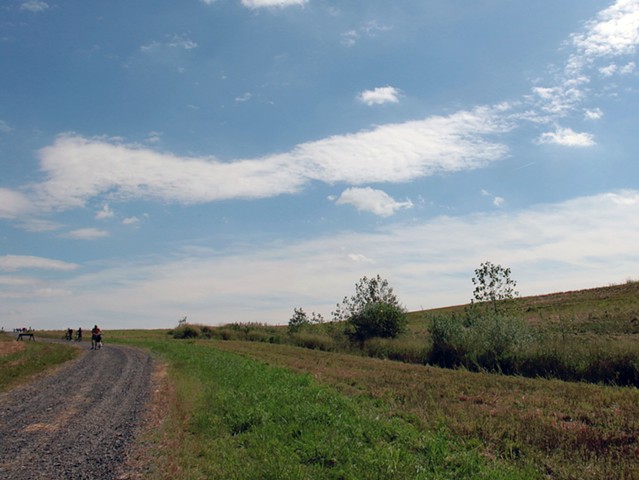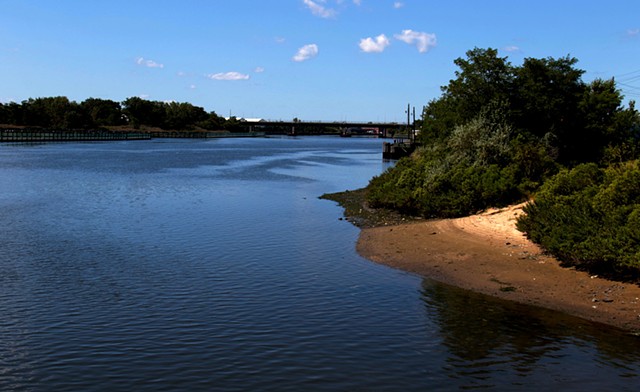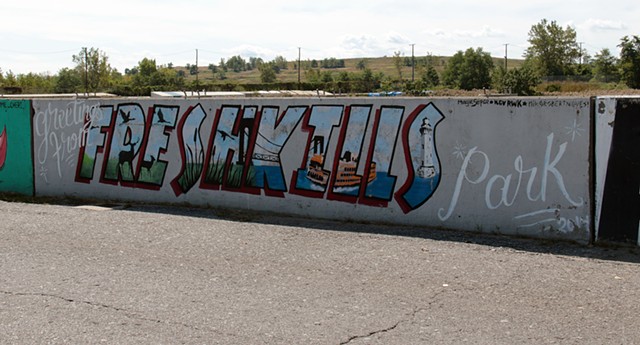Fresh Kills Renewal
The Following Article Is Featured On My Blog; LCPhotowerx.blogspot.com :
Fresh Kills Landfill was a garbage dump covering 2,200 acres here on Staten Island. The name comes from the landfill's location along the banks of the Fresh Kills estuary on the western part of the Island. It opened in 1948 as a temporary landfill, but by 1955 became the largest landfill in the world, and pretty much had the word, "Temporary" removed." Falsely rumored to be visible from space, it became a lightning rod for controversy, sadly becoming the only thing the Island would be associated with for decades to come.
At its peak, in 1986, It received 29,000 tons of residential waste a day. Comprised of four mounds ranging from 90 to over 200 feet tall, it was estimated that, if kept open, the landfill would have eventually reached a height of over 500 ft. At this height, it would have been taller then Staten Island's other high point, Todt Hill, making it the highest point on the Eastern seaboard.
It was structured like a layer cake, with a layer of garbage covered by a layer of ash, another layer of garbage, and then a layer of dirt in an attempt to contain the smell. Initially, the land it was located on was a salt marsh with forests, featuring tidal & freshwater wetlands. The subsoil was made up of clay & sand, with silt as the top layer of soil. The tidal marsh cleaned & oxygenated the water that passed through it. This was destroyed by the dump. Fauna was replaced with seagulls, and native plant species were driven out by common reed, a grass which grows abundantly in disturbed areas. Stagnant, de-oxygenated water was less attractive to waterfowl, decreasing their population.
An eyesore for years, intense community pressure and public outcry finally led to a state mandate being passed in 1996 requiring the landfill cease accepting waste by the end of 2001. With much fanfare, Fresh Kills received its last garbage barge on March 22, 2001.
In 1997, work began when two of the four landfill mounds were closed and covered with a thick, impermeable cap. Capping of the West Mound was finished in 2018. Eight additional layers of barrier material separate the ground and the landfill beneath it. Several systems are in place to manage landfill gas & leachate byproducts. The Department of Sanitation(DSNY) works with the New York State Department of Environmental Conservation (NYSDEC) to meet regulations for environmentally sound landfill closure, and will continue operating on–site environmental monitoring & control for at least the next 30 years.
After September 11th, Fresh Kills was temporarily re-opened to be used as a crime lab for some of the rubble from Ground Zero. More than 1,600 personal effects were retrieved during this time. About 1.6 million tons of material from the World Trade Center Site was taken to the landfill for sorting. Thousands of detectives & forensic evidence specialists worked for months trying to recover remnants of the victims. A final count of 4,257 human remains were retrieved, yet only 300 people were identified from these remains. The search effort did not end until all discernible remains & effects were removed and taken to the Office of Chief Medical Examiner for identification and safekeeping. Remaining debris was buried in a 40-acre portion of the landfill.
Shortly after closing, but prior to 9/11, the NYC Department of City Planning held an international design competition to find a landscape architecture firm to design a city park at Fresh Kills. The winning proposal, announced in 2003, came from the firm James Corner Field Operations. A Draft Master Plan was released in March 2006. The Plan for what is now known as Freshkills Park - envisioned the site as five parks in one, each with a unique character & programming. Original design proposals were adjusted with input gathered in meetings & workshops between the project team,Staten Islanders and government officials. These outreach efforts led to design updates including; roads to ease traffic around the park, recreational uses such as kayaking, horseback riding, sports fields, and renewable energy projects, such as a solar farm & wind turbines.
Later that year, the NYC Parks Department became the lead city agency responsible for overseeing implementation of the plan. The Parks Dept. also had to meet the same NYSDEC regulations as DSNY, with no area of the park to be open to the public until it meets state standards for public access. Ensuring health and safety of visitors to the Park became the highest priority. DSNY established state-of-the-art environmental controls, making it a worldwide model for land reclamation & reuse.
A regulated system of wells, trenches & pipes collects landfill byproducts & gases, sending them to treatment plants. The gas is refined into natural gas & distributed to Staten Island residents for cooking & heating. With leachate, solid materials are separated from water and compressed into sludge cakes which are transported to other facilities, with clean water being reintroduced into Arthur Kill.
A majority of the funding to build the park has come from City capital funds, grants from the N.Y. State Department of State, the State Department of Parks, and the Federal Highway Administration through funding from the Congestion Mitigation & Air Quality Improvement Program.
The Freshkills Park Alliance was created as the not-for-profit partner that will work with the City to develop the Park. The Alliance helps ensure the Park’s evolution & will assist in raising necessary funds, promoting environmental research & ecological restoration, engaging advocates & volunteers, and sponsoring a range of recreational, cultural, and educational programs for the public. Initial projects are already underway with the U.S. Forest Service, CUNY’s College of Staten Island & Hunter College, among others. Partners in academia, museums, government, and the private sector are continually being sought in the interest of scientific research and additional funding opportunities.
While initially Only 700 acres were originally allocated for the park, a change in November 2013 allowed for all 2,200 acres to be used, making it three times the size of Central Park, and the largest park developed in New York City in over 100 years. So you can look forward to seeing the following in the coming years:
•The Confluence: 70 acres at the meeting point of the park’s two creeks, which will be the center of the park. Comprised of two major sections, the 50-acre Point & the 20-acre Creek Landing, the Confluence will be home to the visitor & information centers, restaurants, event spaces and landscapes for passive recreation. Waterborne access to the area has been proposed via waterways that previously allowed barge deliveries to the landfill.
•North Park: The 223-acre portion known as North Park will largely be devoted to wildlife, featuring the William T. Davis refuge, along with running/walking/hiking and bike trails. There are also plans for bird watching structures, hilltop picnic areas, an eco-education center, and a floating dock for canoe access. Construction of North Park began in 2010, and In October 2012, Schmul Park opened to the public. Formerly an asphalt & chain-link fence playground, it was restored with new play surfaces, basketball & handball courts & native plants.
•South Park(No, not that one.): Like North Park, this 425-acre part of the park will feature a significant amount of natural woodlands & wetlands, but also contain space for more active recreational uses like tennis & biking, and an equestrian center. In April 2013, Owl Hollow Fields part of the park opened with four new AstroTurf fields located near Arden Avenue & Arthur Kill Road.
•East Park: At 482 acres , it is proposed to feature meadows, trails, playing fields and picnic areas. Entrances for a vehicular road system along Richmond Avenue are expected to permit traffic through East Park toward the West Shore Expressway.
•West Park: The site of the 9/11 investigation, the West Park site is where debris was carefully screened. A monument to the September 11th attacks is planned to occupy this portion of the site with active recreational uses being kept away from the monument area.
Even though the park is not scheduled to be finished until 2035–37, the Parks Department reported in 2011 that nature was returning en masse to Fresh Kills, with two hundred different species of wildlife spotted, including; snapping turtles, osprey, red-winged blackbirds, American goldfinches, red-tailed hawks, tree swallows, and turkey vultures. The site has offered a unique opportunity to study biodiversity change in an urban setting.
While Freshkills Park continues its development, NYC Parks & Freshkills Park Alliance have hosted events & programs on the site. From 2010 through 2014, the highlight of these programs was the annual Sneak Peak where visitors had the chance to kayak, hike and bike, and fly kites on normally under construction sections of the park. Beginning in 2015, the Sneak Peak event was replaced by a host of programs regularly offered during the April through October season.
One such of these events, Discovery day, I attended on Sept.16th, 2019. and to say I was impressed would be a great understatement. This place has so much potential, it would be criminal for it not to follow through on its promise to return a blighted sight to glory. In fact, if the plan goes as expected, I fully expect it will make the dump all but a forgotten memory.
There are portions that I walked on, North Park and East Park, wherein I felt as though I was in the middle of a Kansas cornfield, surrounded by utterly serene nothingness, which for someone so used to the urban jungle of the big city, is a much welcome reprieve. I found myself almost emotional in the vast green space. Many times throughout the day, I repeated to myself, "this cannot be the dump, this cannot be the dump."
While a few signs of the past remain, such as small vents and piping, the transformation from trash heap to sanctuary is absolutely and utterly jaw dropping. The combined efforts of the Parks dept., DSNY, FreshKills Park Alliance, the contractors, and everyone involved with this project should be applauded. It's gloriously refreshing to see what happens when real effort is put into something.
Continuing on my way through the park, I felt at ease on the paved trail, denoting how great it will be to eventually run it. Never once did it feel like any of the 7 plus miles I walked was a slog. A minor complaint is certain sections lacked appropriate tree cover. This could prove difficult for some in the summertime. But i'm sure that will be addressed, and it will be an incredible recreational refuge for untold millions, making Central Park seem like a traffic island in comparison.
For far too long, Staten Island has been known as, "The Forgotten Borough", cast aside by glitzy Brooklyn or eclectic Queens. When this park is finished, we will finally take our rightful place as a beacon of environmental success that will drive the city unto the future. The nearly unbearable stench that assaulted shoppers sense of smell at the Staten Island mall is a thing of the past. Shoppers will soon be privy to what could be the greatest public works reclamation project of our time.
The amenities, lacking now, but anticipated later will be heartily welcomed for sure, as the only other downside to my visit was a lack of seating and available drinking fountains. Though with much of the site still under construction, this is understandable.
I can see great potential for an amphitheater to host local bands- and maybe even global superstars, food carts or small restaurants(This was already announced, I hope they follow up with it, and go local - maybe a Mark's Bakery or Ralph's Ices outpost, or even another Nunzios pizza location), as well as a dock for the ever expanding NYC Ferry system in the future, perhaps even a garden or fruit orchard, I mean, we are the big apple, right?
For decades, this island has been where good, sometimes great ideas go to die. Movie studio at the former Stapleton navy base? That went no where. NASCAR track? A non-starter, and lets try and forget the debacle that was the N.Y. wheel project, and now its side project, the stone and glass monstrosity known as the Empire Outlets mall is already facing financial difficulty, and it hasn't been open for even a year.
But Freshkills Park, this, I tell you, will be Staten Island's savior, which is Kind of ironic when you really think about it. The garbage dump everyone looked at as the point of everything wrong with Staten Island will in the end, wind up being its savior.

